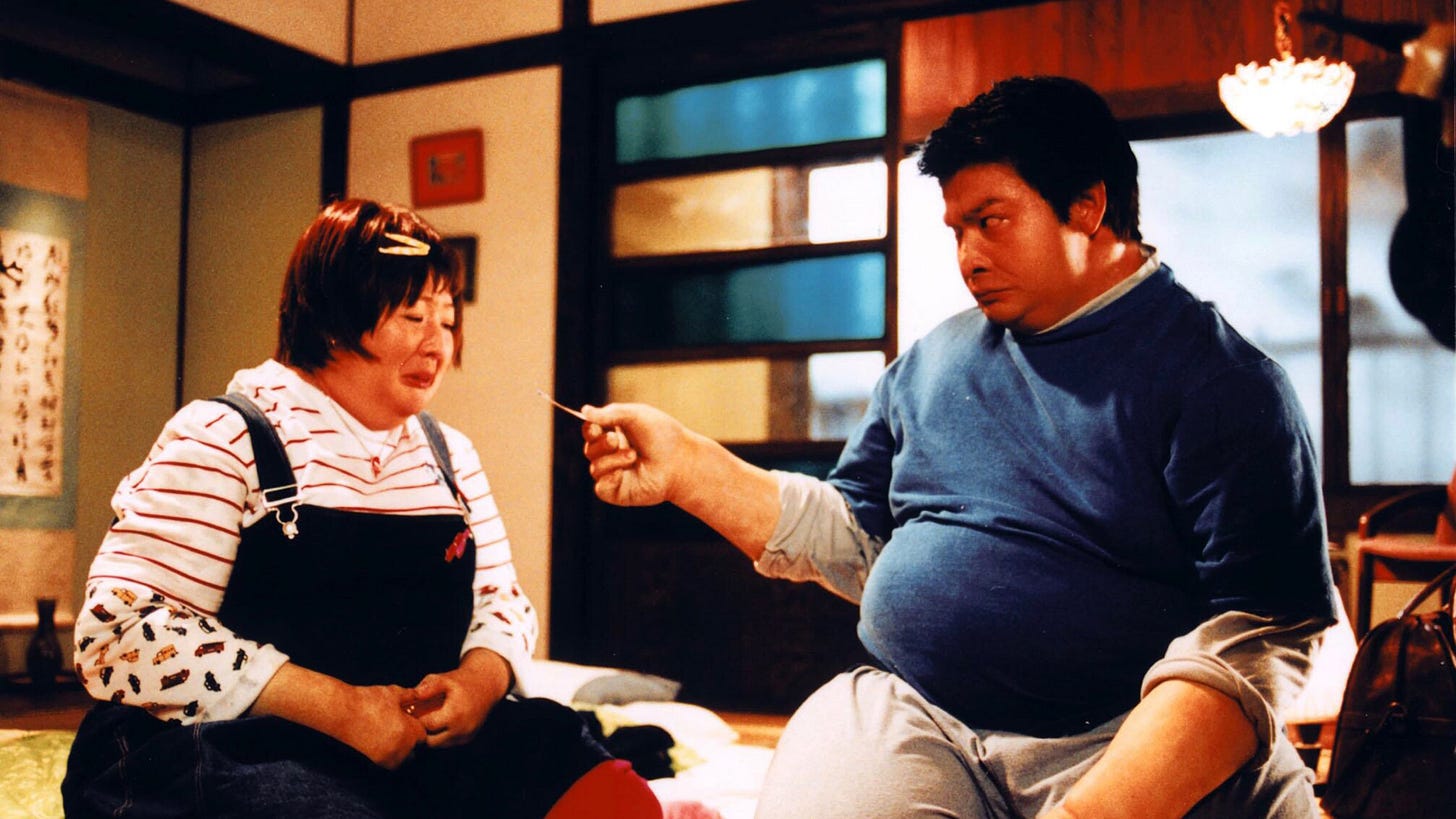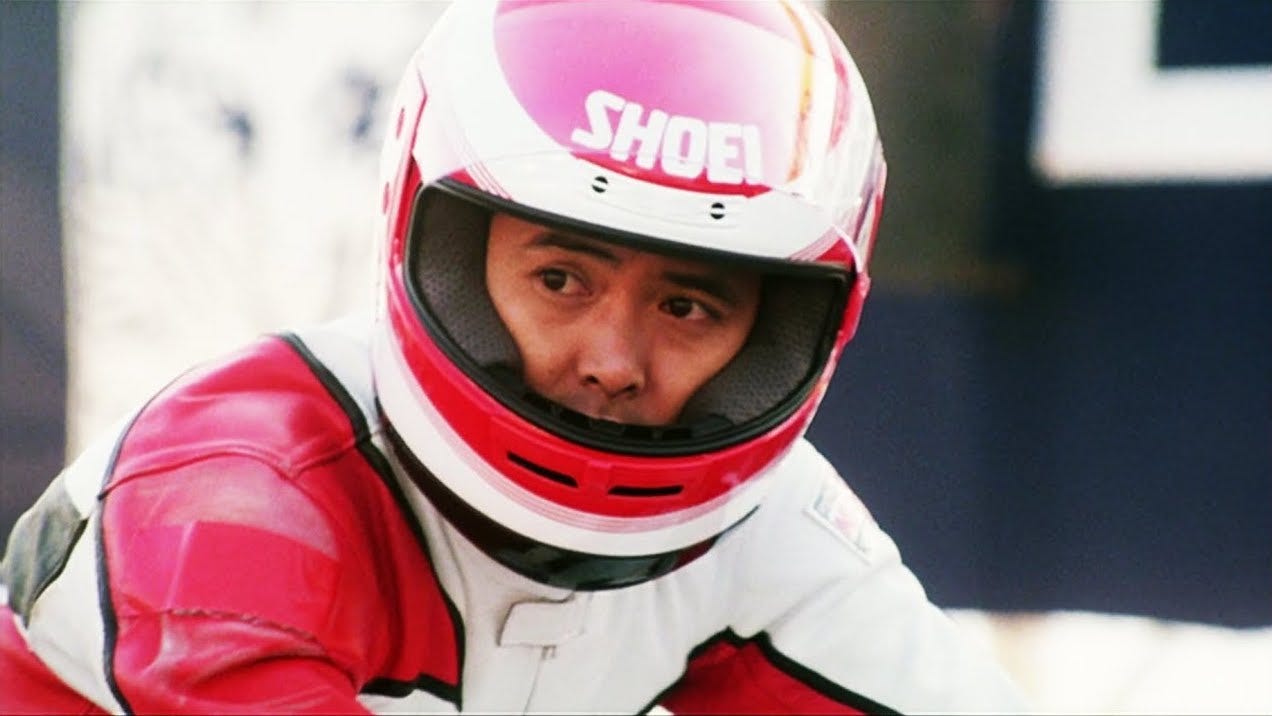Rest Easy, Big Fellas
On the Farrelly brothers' 'Shallow Hal' (2001), Johnnie To and Wai Ka-fai's 'Love on a Diet' (2001), and the death of the fatsuit comedy
There are certain subgenres of film that managed to strike such a deep chord with audiences at a specific time in history, that cinephiles will always long for their return. For instance, the aesthetics of the classic noir have been replicated countless times — a few branches from that, critics and online denizens have yearned for a return of the erotic thrillers of Joe Eszterhas and the sleazy late ‘80s/early ‘90s. “What ever happened to movies for adults?” is a common refrain whose lack of specificity has always been bothersome. But is there anyone who still wants to see movie stars doing silly gags in giant fatsuits? Obviously, there are societal and political issues that led to the fatsuit comedy becoming an unsavory and even problematic genre offshoot but it’s worth asking what it was that ultimately did it in. Was 2007’s Norbit that offensively bad, to the point where nobody thought the concept would be bankrolled again? Norbit nearly tripled its $60 million budget, so that can’t be the case. Is it an issue of representation? The answer to that is surprisingly complicated.
To say that the fatsuit comedy has died because audiences became sick of seeing athletic actors hop in 100-pound suits and make fun of fat people seems accurate on its face. However, this fails to account for a new subgenre that began cropping up over the course of the 2010s — the prestige fatsuit drama. Seeing more and more of these popping up over the last decade has been curious; had popular tastes dictated that fatsuits were acceptable as long as the movie was considered serious enough?
When Glenn Close donned the suit for the role of Meemaw in Hillbilly Elegy (2020), authentic representation was nowhere to be found and the Ron Howard-directed film was a critical flop. Russell Crowe’s fatsuit period (2020’s Unhinged, as well as his role as Roger Ailes for Showtime’s The Loudest Voice which aired in 2019) didn’t exactly meet rapturous acclaim, and many moviegoers found Brendan Fraser’s role in Darren Aronofsky’s The Whale (2022) as sickening as his blood pressure readout — in spite of the awards love. Reflecting on these examples, one can’t help but feel like it might be time to hang up the prestige fatsuit right alongside the comedy one and lock up the oversized closet for good, but perhaps, a look back at a genre classic could prove itself useful when assessing both its legacy and its future.
Shallow Hal (2001) is a movie that never quite delivers on its premise. Tony Robbins, as himself, gives Jack Black’s titular Hal the ability to only see what is referred to as “inner beauty,” beyond everyone’s physical appearance. Despite the high-concept hijinx present in just about every Farrelly brothers film, the physical gags here are truly savored and even repeated during dramatic moments. For example, Hal doesn’t realize that Gwyneth Paltrow’s Rosie has busted a chair with her 800-pound frame until he sees her do it a second time, after the magic motivational mojo of Tony Robbins has faded.
However, Shallow Hal is ultimately much more about perception and attitudes about the world around you than it is about body positivity or inner beauty. When Hal visits a wing of a hospital full of child burn victims, the hokey premise that inner beauty is all he can see is challenged. The first time he visits, under Robbins’ spell, he sees your prototypical child actors. The second time, after the effect wears off, a somber Hal slumps into the hospital wing to the tune of Neil Young’s “After The Gold Rush” and sees the whole truth. He doesn’t just recognize the trauma that these children have carried since their accidents, but realizes that Gwyneth Paltrow’s character has given her life over to these children in order to better the world.
Speaking of Tony Robbins, there is also a major motivational streak in Johnnie To and Wai Ka-fai’s Love on a Diet. Released just four months before Shallow Hal, their film is structured more like a sports film than a romcom, montage-laden and littered with training sequences. Despite the message of the love story being a lot more traditional than Shallow Hal (and the fat jokes more offensive), the pure heartfelt romanticism is what drew me in, especially in comparison with the always sincere Farrelly brothers. Where the sincerity of the Farrelly brothers’ melodrama exists to inform the comedy, To and Wai are genre filmmakers first and foremost. To’s bleak action films that take place on both sides of the law like PTU (2003) or Drug War (2012) will gaze at his characters with a clinical remove, while his camera adores them in the romantic portions of Love on a Diet or his motorcycle melodrama All About Ah-Long (1989).
I often reference Norbit as the nail in the coffin of the subgenre, not just because the fatsuit-wearing characters that came in its wake would often be relegated to supporting roles, but because of the feeling that permeated the theater I first saw it in. Even as a child, I could sense the film completely dying with most of the audience. With Murphy also adding yellowface to the uncouth ensemble, Norbit is a film that lacks the deeper thematic or emotional resonance of a Farrelly brothers movie, and as a result, becomes harder to defend. There is nothing more to it than Murphy, as Rasputia, trying his best to make the audience laugh, but maybe comedies don’t need to explain themselves beyond this immediate purpose. The most notable comedic fatsuit since Norbit would probably be Tom Cruise as Les Grossman in Tropic Thunder (2008), a movie built around the comedy of many Hollywood products being in poor taste. Cruise’s fatsuit is, however, one-upped by Robert Downey Jr.’s Academy Award-nominated blackface, and the joke of Cruise’s character seems to be much more of mining a Harvey Weinstein parallel than anything else.
With studio comedies at their nadir, inventiveness or re-invention will be necessary for their survival — fatsuits can be part of that. This isn’t to say the suit only produces greatness, but that genre filmmaking can only handicap itself by setting boundaries on the tools it utilizes. Whether these tools are outmoded camera techniques, language that has fallen out of favor, or narrative devices that have become “tropes,” perhaps contemporary genre films (particularly those made in Hollywood) are selling themselves short by not utilizing the tools at their disposal.





